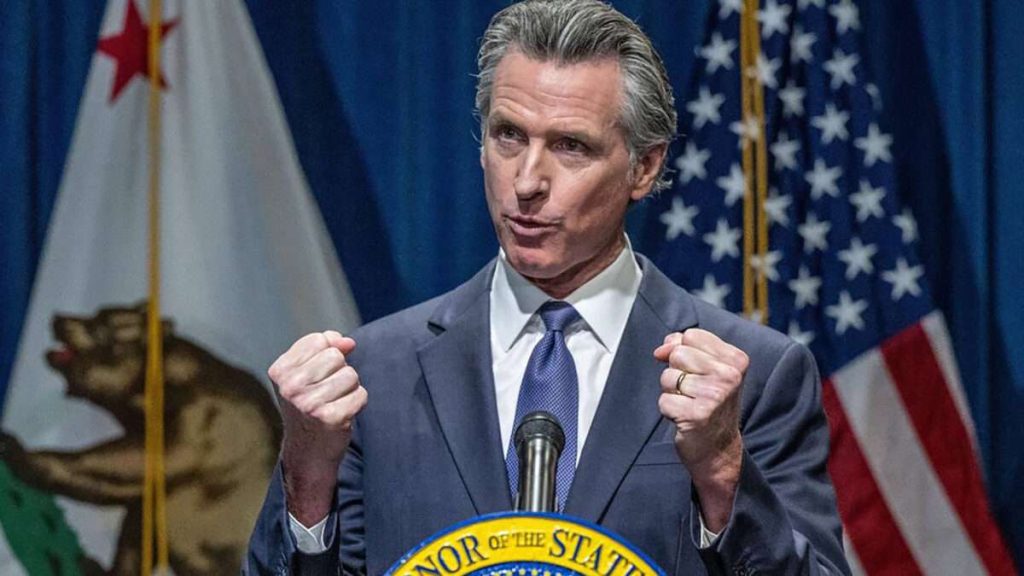When he endorsed marijuana legalization in Florida last August, Republican presidential nominee Donald Trump emphasized the importance of regulations to protect bystanders from exposure to pot smoke. “We need the State Legislature to responsibly create laws that prohibit the use of [cannabis] in public spaces,” Trump wrote on Truth Social, “so we do not smell marijuana everywhere we go, like we do in many of the Democrat run Cities.” Trump’s running mate, Sen. J.D. Vance (R–Ohio), has expressed similar concerns, saying “we haven’t quite figured out how this new regime coexists with not polluting our public spaces.”
Expanding the options for cannabis consumption outside the home, as California is finally doing eight years after legalizing recreational use, is one promising way to address those concerns. On Monday, Gov. Gavin Newsom, who last year vetoed a bill that would have authorized Amsterdam-style cannabis cafés in California, signed a revised version into law. Assembly Bill 1775 allows dispensaries, with local permission, to sell hot food and nonalcoholic beverages along with marijuana products. Such businesses will also be allowed to host “live musical or other performances,” as bars and restaurants that serve alcohol routinely do.
State law previously allowed on-site consumption at specially licensed pot shops, but their culinary options were limited to prepackaged snacks and drinks. California marijuana merchants hope the new dispensation will help them compete against unlicensed pot dealers who do not have to collect taxes or comply with burdensome state and local regulations. “Cannabis cafés are going to be a huge part of the future of cannabis in our state and help to beat back the illegal drug market,” said Assemblymember Matt Haney (D–San Francisco), the bill’s sponsor.
California’s new flexibility is an important step toward solving a puzzleroblem that was typically overlooked in the early days of legalization: Once people could legally buy marijuana, where could they legally consume it? The main answer was at home, which was not practical for visitors from other states, might not be allowed in rentals, and precluded consumption in many social settings. That gap inspired creative solutions, such as cannabis-friendly bus and limousine tours, that in turn inspired crackdowns by disapproving local authorities.
Since then, early legalizers such as Colorado and Alaska have been gradually coming around, amending their rules to allow cannabis consumption outside of private residences. Some states that legalized marijuana later, such as Massachusetts and Illinois, at least notionally allowed on-site consumption from the beginning. But regulatory approval of specific businesses has been slow, and the options in most places remain few and far between.
Consider Las Vegas, which annually attracts some 40 million visitors from around the world, a significant percentage of whom visit one or more of the two dozen or so dispensaries located near the Strip. Once tourists make their purchases, what are they supposed to do with them?
“You cannot use cannabis in any public place,” Nevada’s Cannabis Compliance Board warns. “You cannot use cannabis in a moving vehicle, even if you’re a passenger.” The board adds that “cannabis can be consumed on private property (at home, for example), and as long as the property owner has not prohibited it.”
Eight years after Nevada voters approved recreational legalization, that private-property exception still will not get tourists far. Lexi Las Vegas advertises itself as the city’s “only cannabis friendly hotel,” and so far only a couple of licensed cannabis consumption lounges are up and running, although more are in the works.
When the legal consumption options are extremely limited, it is hardly surprising that people end up smoking or vaping in places where it is especially likely to annoy passers-by. Conversely, when residents and visitors can readily use marijuana inside private businesses that cater to cannabis consumers, they will be less apt to irk people who object to the odor.
Ohio voters approved legalization last November, and licensed recreational sales did not begin until August. Yet last May, Vance was already complaining that “you take your kids downtown Cincinnati to go to a restaurant, and you walk by, like, five people who are stoned.” He added that “it smells terrible” and “I don’t want that.” Vance suggested that “we just need a different cultural sensibility that if we’re going to go into this more open regime, people have to actually take some responsibility and not do it around, y’know, 6-year-old kids.”
If Ohio legislators want to build and reinforce that “cultural sensibility,” they should let people smoke pot in designated locations where Vance and his family are less likely to encounter them. “It is left up to the property owner to determine how or whether to address cannabis consumption on their property,” Tom Haren, a lawyer who worked for Ohio’s legalization campaign, told The Columbus Dispatch in April. But as the Dispatch notes, state law “prohibits people from smoking plant material in enclosed areas open to the public, with exceptions for outdoor patios, smoke shops and hotel rooms designated for smoking.”
Newsom cited California’s similar law when he vetoed Haney’s original bill last year. “I am concerned this bill could undermine California’s long-standing smoke-free workplace protections,” the governor said in his veto message.
The amended bill says cannabis café employees are entitled to wear employer-provided respirators. It also says local governments may “require adequate ventilation and filtration systems,” defined as systems that “prevent smoke and odors from migrating to any other part of the building hosting the consumption lounge or any neighboring building or grounds.” While local licensing authorities must “consider” such systems, they are not required to mandate them.
“I commend the author for incorporating additional safeguards, such as expressly
protecting employees discretion to wear a mask for respiration, paid for at the expense of the employer, and requiring employees to receive additional guidance on the risks of secondhand cannabis smoke,” Newsom said when he signed the bill. But “any future measure that diverges from this tailored approach,” he warned, “will not be looked upon favorably.”
Jim Knox, California managing director for the American Cancer Society Cancer Action Network, dismissed the “additional safeguards” as “nonsense” and “window dressing.” The union that represents dispensary employees, which endorsed the bill, seems to disagree. And if states can find a way to tolerate pot smoking in settings that no one is required to enter, it should help to reduce the nuisance that bothers people like Trump and Vance.
The post 8 Years After Legalizing Pot, California Will Finally Allow Cannabis Cafés appeared first on Reason.com.







